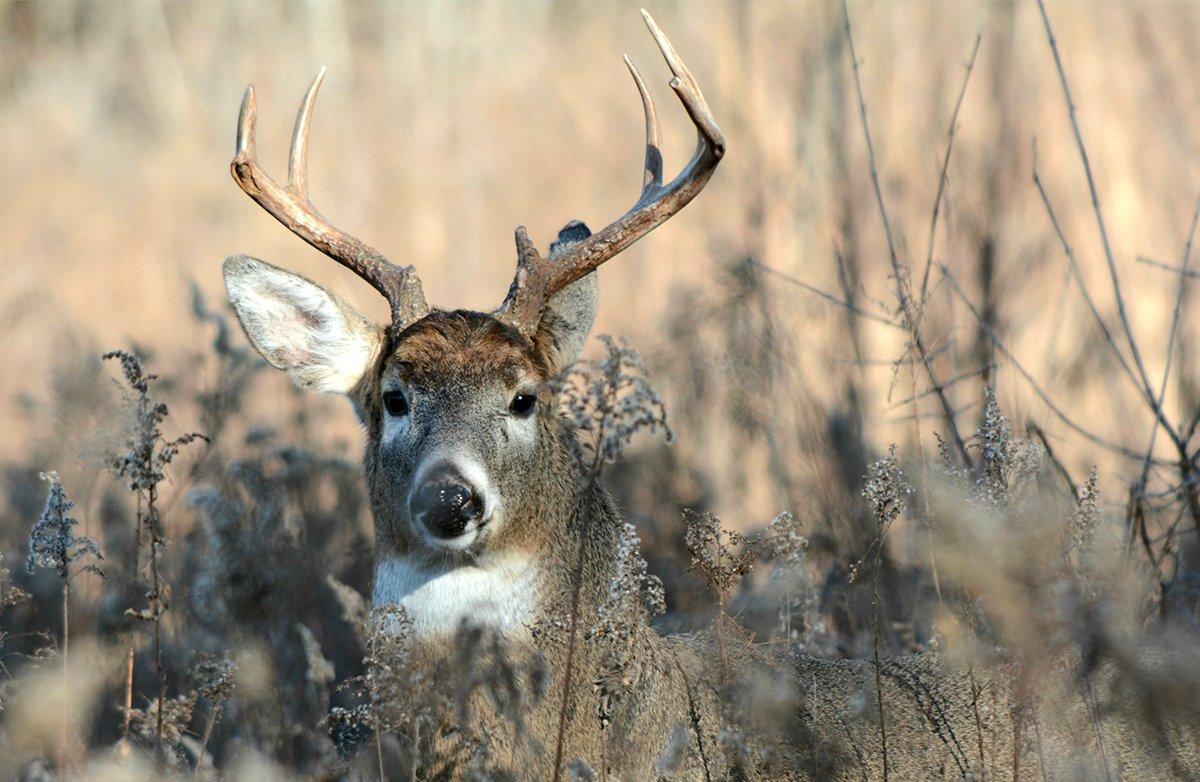What Do You Expect to See This Year?
Killing a big buck is easy. You just head out to the stand, crack the horns together a few times, whisper a few lines about the treestand setup to the guy over your shoulder holding the videocamera and then whack the first monster that saunters by.
Oh if life actually mimicked TV. Or magazines. Or DVDs. Or my dreams for that matter.
Unfortunately it does not. On second thought, maybe that's not so bad after all. Killing a mature buck is a major accomplishment — for many it's a once-in-a-lifetime occurrence. If big bucks were easy to come by they wouldn't be nearly as special, and I guarantee you we wouldn't all be so obsessed with them.
I have no trouble admitting that I'm an antleraholic. The more bone the better. Wouldn't have it any other way. Long live Rack Kong.
As the Quality Deer Management (www.qdma.com) movement steadily gains steam throughout whitetail country, more and more hunters are focusing their efforts on tagging a mature buck. A buck with the kind of antlers you dream about.
I'm certainly one of them. Although, I'm pretty proud to admit, I'm not new to the game of passing on younger, smaller bucks in hopes that something bigger and older will walk past. For nearly 15 years I've tried to exercise great restraint when it comes to taking bucks. It's a philosophy I adopted soon after becoming familiar with bowhunting icons Gene and Barry Wensel. Their video Bowhunting October Whitetails changed the way I thought about hunting. Despite the fact that I had killed just one buck with my bow when I first saw that video, I decided I wanted to target big bucks exclusively. And to do that, it meant I had to let the little guys walk. And so I did and still do.
So what's a guy to do? Hunt smarter, hunt harder and, most importantly, hit the woods with realistic expectations and stick to those goals.
As a new season is set to dawn, there's no better time to set some realistic standards. Personally, I try to target only those bucks that are 3 years of age. It's a lofty goal but it's an attainable one. I believe there are a couple of 3-year-olds around my hunting areas each year. Very rarely, there may be a buck that's survived to his fourth year. A 5-year-old is almost unheard of. But again, set your expectations with your state.
Compare that, however, with a state like Iowa where less than 40,000 archery licenses are sold and the gun season lasts just a few days in December. There, many bucks live to maturity and the odds of taking one are exponentially greater.
Clearly, there are areas of the country where holding out for a mature buck means a lot of seasons with unfilled tags.
But should that keep you from passing on young bucks and simply settling for the status quo? Absolutely not.
Every state has mature bucks. They may be few and far between, but they're there. If you really want to dedicate yourself to taking a better-than-average buck, you simply need to learn a little bit about the harvest trends and statistics of your state and set a goal that's high but not so far out of reach that it's unattainable.
So how do you go about setting a lofty but attainable goal? Start by doing a little research on the region you hunt. Does it have a history of producing older age-class animals? How heavily is the area hunted? Do you have access to ground that doesn't receive intense hunting pressure?
All of these factors must be considered. While the QDM movement is a tremendous step in the right direction for overall deer health, I do think the focus by the outdoor media (myself included) has tainted our views on reality a bit. There is not a trophy buck behind every tree anywhere in this nation. Some areas certainly have more of them than others, but mature bucks are always a challenge.
If you really want to challenge yourself to taking a better-than-average buck, you need to know what that means and you have to dedicate yourself to the pursuit completely. Also, educate yourself on how to age deer on the hoof (the QDMA is a great resource for information on how to do this) and establish an age limit.
In most areas of the country, establishing a 3-year-old minimum is a great place to start. Even in heavily-hunted states there will be a few 3-year-olds running around. In many instances, that's about as old as you can reasonably expect a buck to survive. In areas with low hunter density, however, it might be wise to go with a 4-year-old or better goal if you have access to prime property.
To really experience a hunting season in which you enter with a defined goal and enjoy it to its fullest, you will have to discipline yourself. Lots of hunters in states with multiple-buck limits like to shoot the first buck and then hold out for a good one. If your goal is to take a mature deer, or a buck that's on the upper end of the scale in your region, you're just perpetuating the circumstances that limit the number of older, bigger bucks with such a mentality. For starters, you're taking out young bucks that could grow into the buck you're looking for. Second, you're not providing yourself the type of experience that comes from setting a goal and chasing it.
Don't Miss: 20 Deer Hunting Lies Your Granddaddy Told You
Editor's Note: This was originally published September 28, 2008.
Are you a deer hunter wanting to learn how to accomplish your goals? Check out our stories, videos and hard-hitting how-to's on deer hunting.







